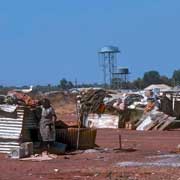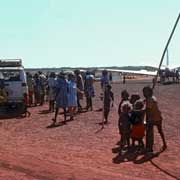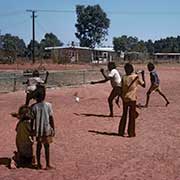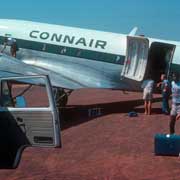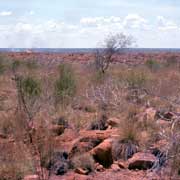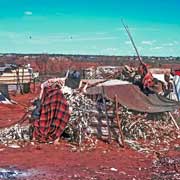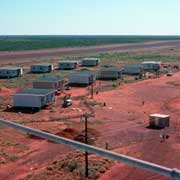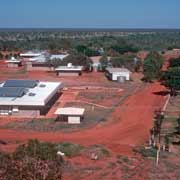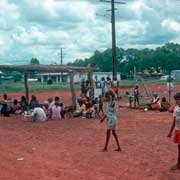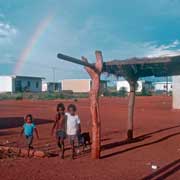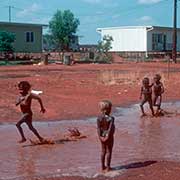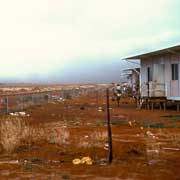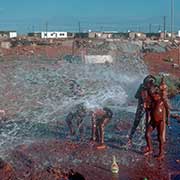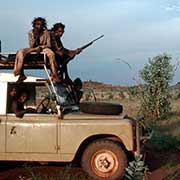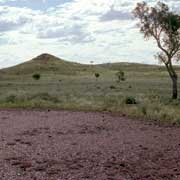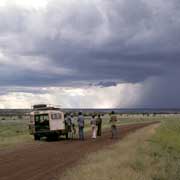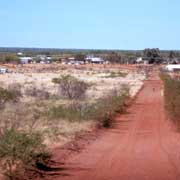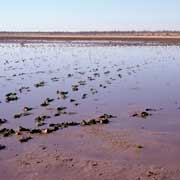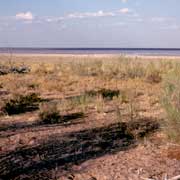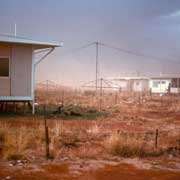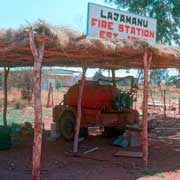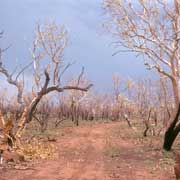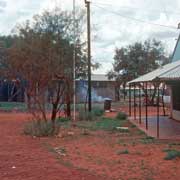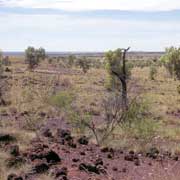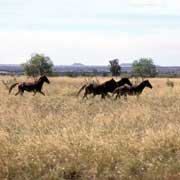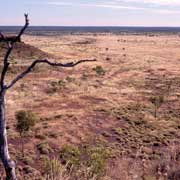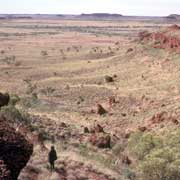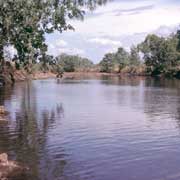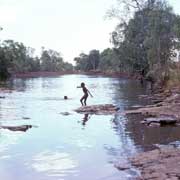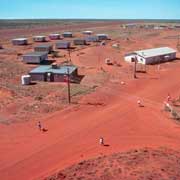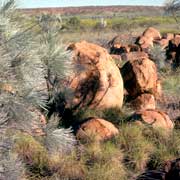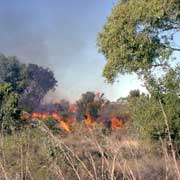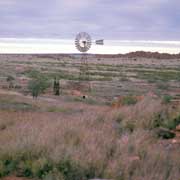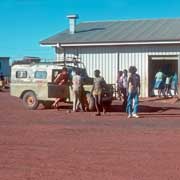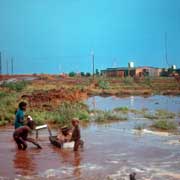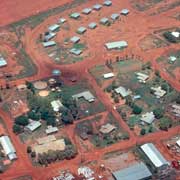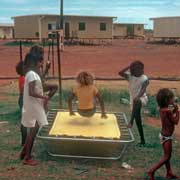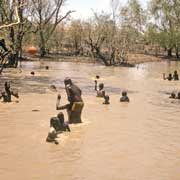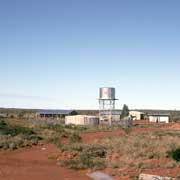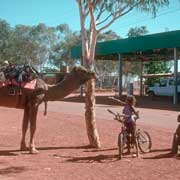Photos of Lajamanu region - the edge of the Tanami, Australia
Lajamanu region - The edge of the Tanami
Lajamanu, formerly Hooker Creek, is a Warlpiri Aboriginal community about 550 kilometres south west of Katherine in semi-arid country on the edge of the Tanami Desert. This country, with its spinifex grasses and acacias, about halfway between Darwin and Alice Springs, traditionally belongs to the Gurindji people, who now live over 100 kilometres further north around Daguragu and Kalkarinji (Wave Hill).
you may then send it as a postcard if you wish.
In 1948 the Native Affairs Branch of the Federal Government decided to establish an Aboriginal Reserve at Catfish, a permanent waterhole almost 600 kilometres north of Yuendumu; they decided that Yuendumu, a Warlpiri Aboriginal settlement about 290 kilometres north west of Alice Springs and experiencing a drought, was getting overcrowded with ever more people from outlying areas coming to the settlement. As the man driving the grader from Yuendumu to make the road to Catfish didn't know the way, two young Warlpiri men agreed to guide him. However, when they reached Supplejack, about 150 kilometres short of Hooker Creek, they decided to walk back, as they now were in unknown country, something that really upset them. The men could walk all day, hunt for food and knew where to find water. When the road to Catfish was completed, Welfare ordered 25 Warlpiri in a truck and drove them all the way to Hooker Creek where they camped. The creek was flowing, there was a bore and they decided to stay there instead of at Catfish, around 30 kilometres further on. Later, when the Hooker Creek dried up, they may have regretted it, but by that time the settlement was already established. The Welfare people had made up their mind to transport 400 Warlpiri people from Yuendumu to Hooker Creek and in 1951 another 150 people were put in trucks and taken there.
The people were very unhappy, taken away from their relatives, their country and its sacred places and dumped in Gurindji country: they all walked the 600 kilometres back to Yuendumu! But they were rounded up again and trucked back to Hooker Creek, from where they walked back to Yuendumu a second time! If ever one needed an illustration of how strongly Aboriginal people are tied to their own "country" it must be this epic tale. But after another transport back to Hooker Creek settlement people stayed; children were born here and although their spiritual homeland remained to the south, people started to call the place home. A series of ceremonies were conducted in the late seventies in which the Gurindji of the Wave Hill area "handed over" the country and the "Dreaming" (Spectacled Hare Wallaby or Wampana) to the Warlpiri: a unique occurrence. Local Government came in the seventies when Hooker Creek ceased to be a welfare settlement: the Lajamanu Council was the first Community Government Council to be formed in the Northern Territory.
Lajamanu now has a population of almost 800, mainly Warlpiri people who strongly maintain their language and culture. Ceremonies and traditional art are extremely important; the remoteness of the place (the road often becomes impassable in the wet season) and the fact that Community Councils have always insisted upon it being a "dry" (alcohol free) community has been an important contributing factor the culture has remained strong. People still go hunting in the spinifex country around and there are interesting places to explore, camp and swim throughout the year: Catfish, where the settlement should have been, is a favourite spot as is Sambo Rockhole on the Victoria river. Further afield is Nongra Lake, a salt lake towards the Western Australia border and around 245 kilometres to the south is the gold mine at Tanami; a good 100 kilometres beyond that is The Granites, another old gold mining site where some of the old people used to live and work; another 250 kilometres on is Yuendumu.



